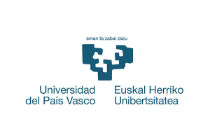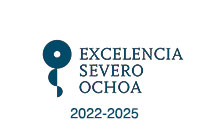 Eventos pasados: Katarzyna Jednoróg. Brain networks for speech and reading in typical and atypical readers
Eventos pasados: Katarzyna Jednoróg. Brain networks for speech and reading in typical and atypical readers
Katarzyna Jednoróg. Brain networks for speech and reading in typical and atypical readers
What: Brain networks for speech and reading in typical and atypical readers
Where: Zoom Room 2
Who: Katarzyna Jednoróg, PhD, Head of Laboratory of Language Neurobiology, Nencki Institute of Experimental Biology, Polish Academy of Science, Warsaw, Poland.
When: Thursday, April 29th at 12:00 PM.
Literacy is one of the most significant challenges for the reorganization of the brain. Neural networks that were evolutionarily adapted for processing of speech, after reading acquisition begin to process also written language. In my talk, I will discuss a number of factors that contribute to the development of brain networks for speech and reading: the level of reading skill, typical or atypical reading development, orthographic transparency, and reading modality. Even little experience in reading changes children’s brain response not only to print but also to speech, and better readers engage among others the left superior temporal gyrus to a larger extent in both processes. In this area, we found converging activation (co-activation) to print and speech, but solely in children who could read. Next, using a longitudinal design, we compared children who developed dyslexia and those who developed typical reading skills. Only in typical readers, we observed increased response to print in the left fusiform and inferior frontal gyri after 2 years of formal education. Hypoactivation in these areas represents a dyslexia-specific atypical developmental trajectory rather than a consequence of lower reading expertise. To test the influence of orthographic transparency we compared brain response in Polish and American children. Speech-print co-activation was evident in both groups mostly in left perisylvian regions with limited language variation. Subtle differences in the strength of this coupling were found probably supporting different reading strategies. Specifically, speech-print convergence was higher for transparent Polish than opaque English in the right temporal area, associated with phonological processing. Conversely, speech-print convergence was higher for English than Polish in left fusiform, associated with visual word recognition. Finally, we tested congenitally blind individuals, who acquire reading using modality different than usual. The neural networks for Braille and visual reading overlapped in the left ventral occipitotemporal cortex. Even though we showed similar perisylvian specialization for speech in both groups, blind subjects did not engage this speech system for reading. Instead, the blind engaged the occipitotemporal cortex not only in reading but also in speech processing, suggesting that this region belongs to a modality independent language network in the blind. I will present preliminary evidence that blinds’ vOT participates in processing speech, even before learning to read.








